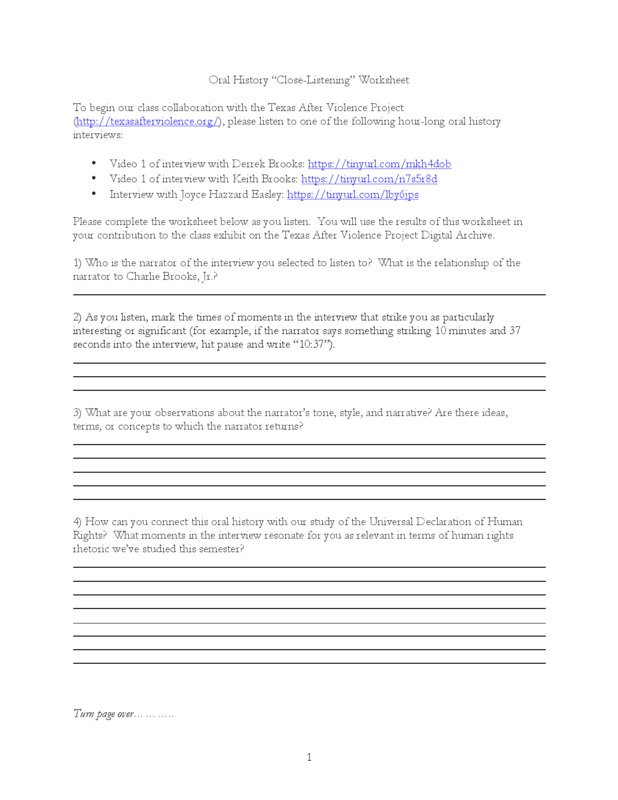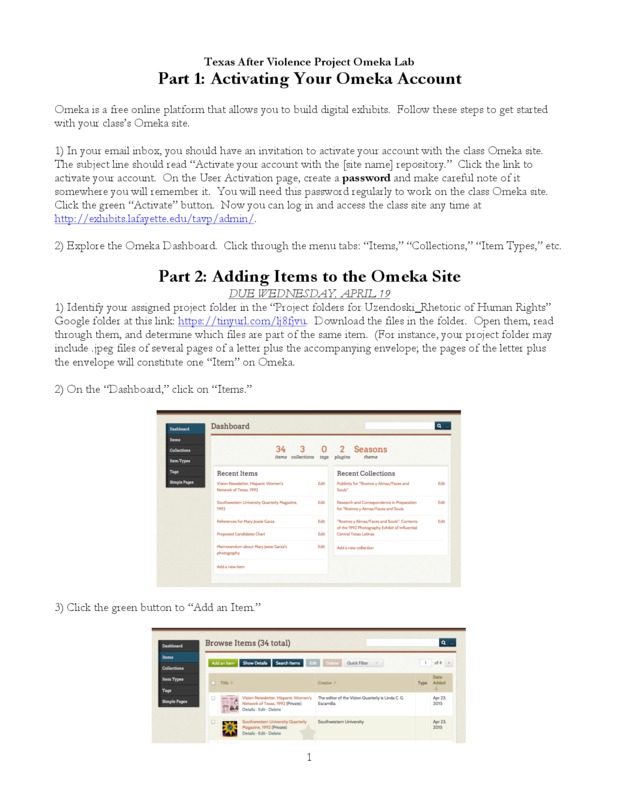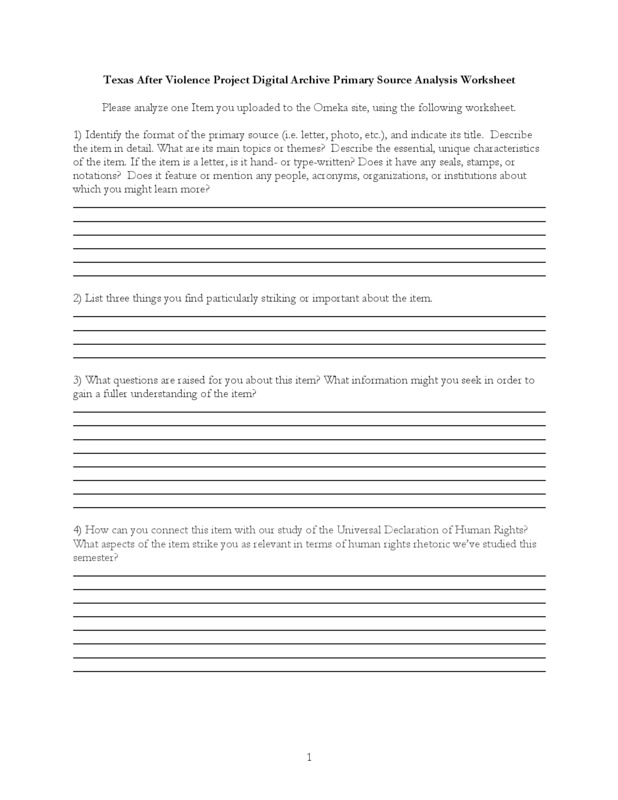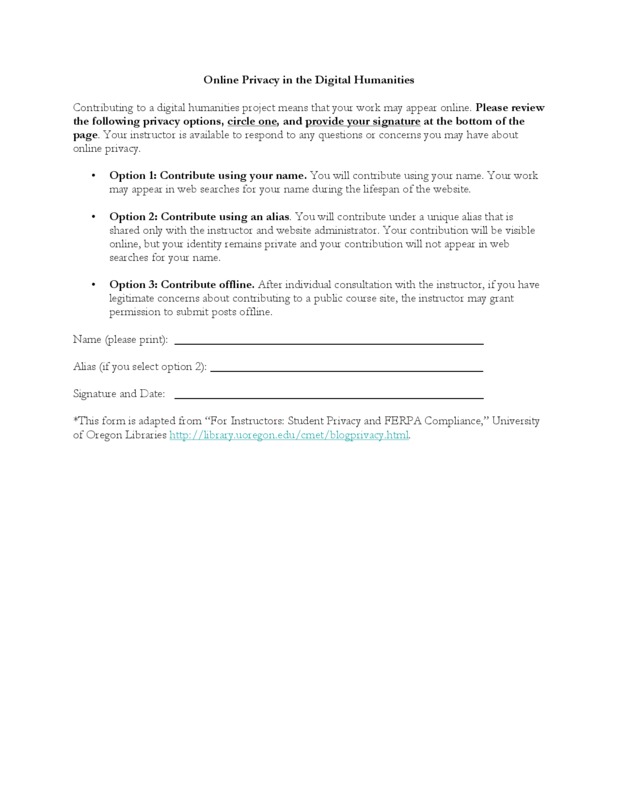How We Built This Exhibit
We started the process of building this exhibit by listening to TAVP oral histories by family members of Charlie Brooks, Jr., including Keith Brooks, Derrek Brooks, and Joyce Hazzard Easley.
In order to engage deeply with the oral histories and analyze their significance in terms of the Universal Declaration of Human Rights, librarian Charlotte Nunes and Professor Andrew Uzendoski developed the following assignments to build cumulatively toward the class digital exhibit.
1) As they listened to the oral histories, students completed the Close-Listening Worksheet to engage deeply with the oral histories.
2) With the Introduction to Omeka Lab, students activated Omeka accounts and learned how to add items and metadata.
3) Once students uploaded items to the site, they conducted a primary source analysis of a text or image of their choosing, as an additional step toward composing an exhibit page.
4) Drawing on the results of the Close-Listening Worksheet and the Primary Source Analysis Worksheet, students began creating exhibit pages using the Adding an Omeka Exhibit Page Lab.
During the process of building the class exhibit, we discussed students' right to online privacy, and asked students to consider whether and how they would like their work to appear publicly on the Omeka site.





